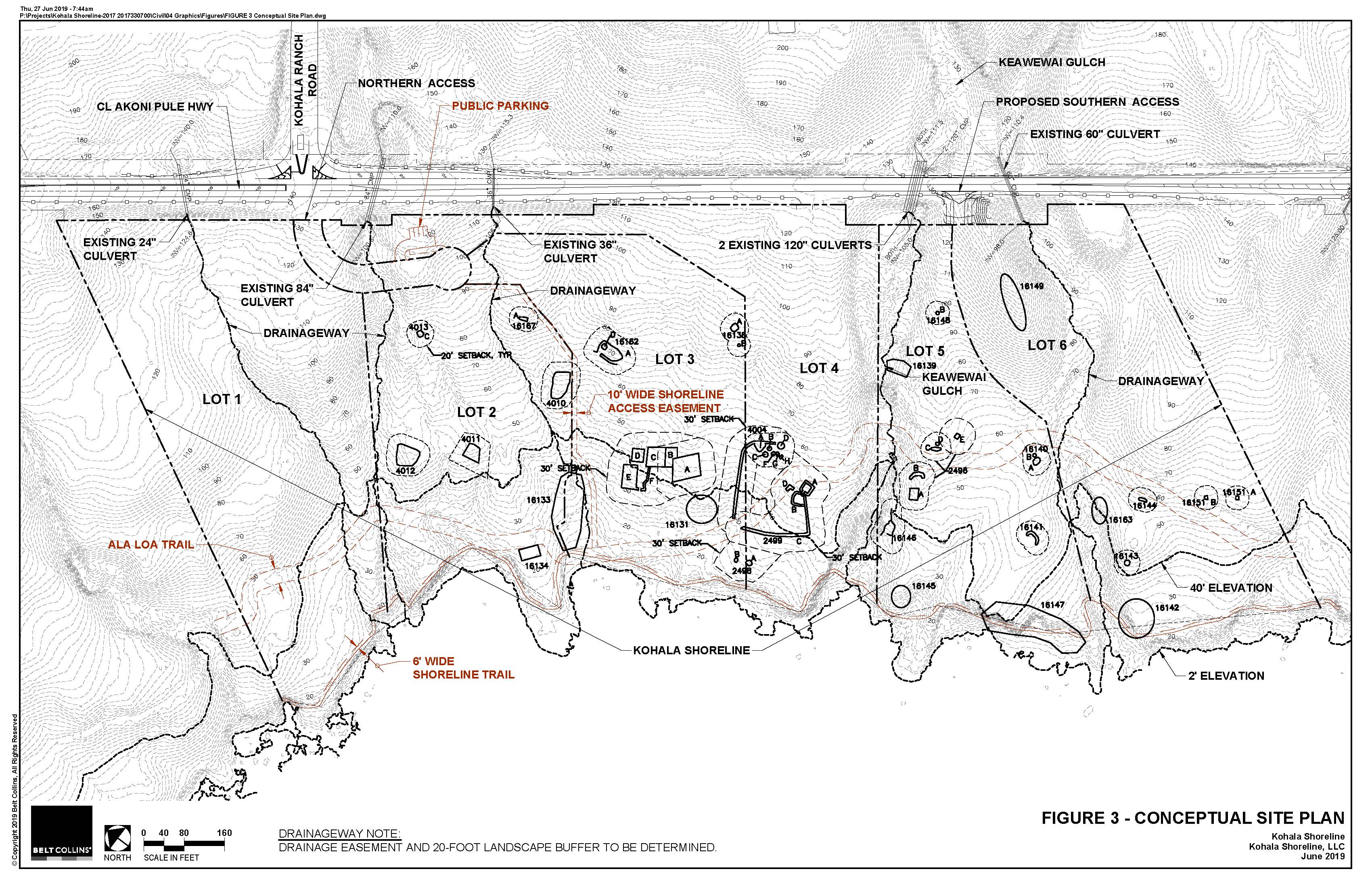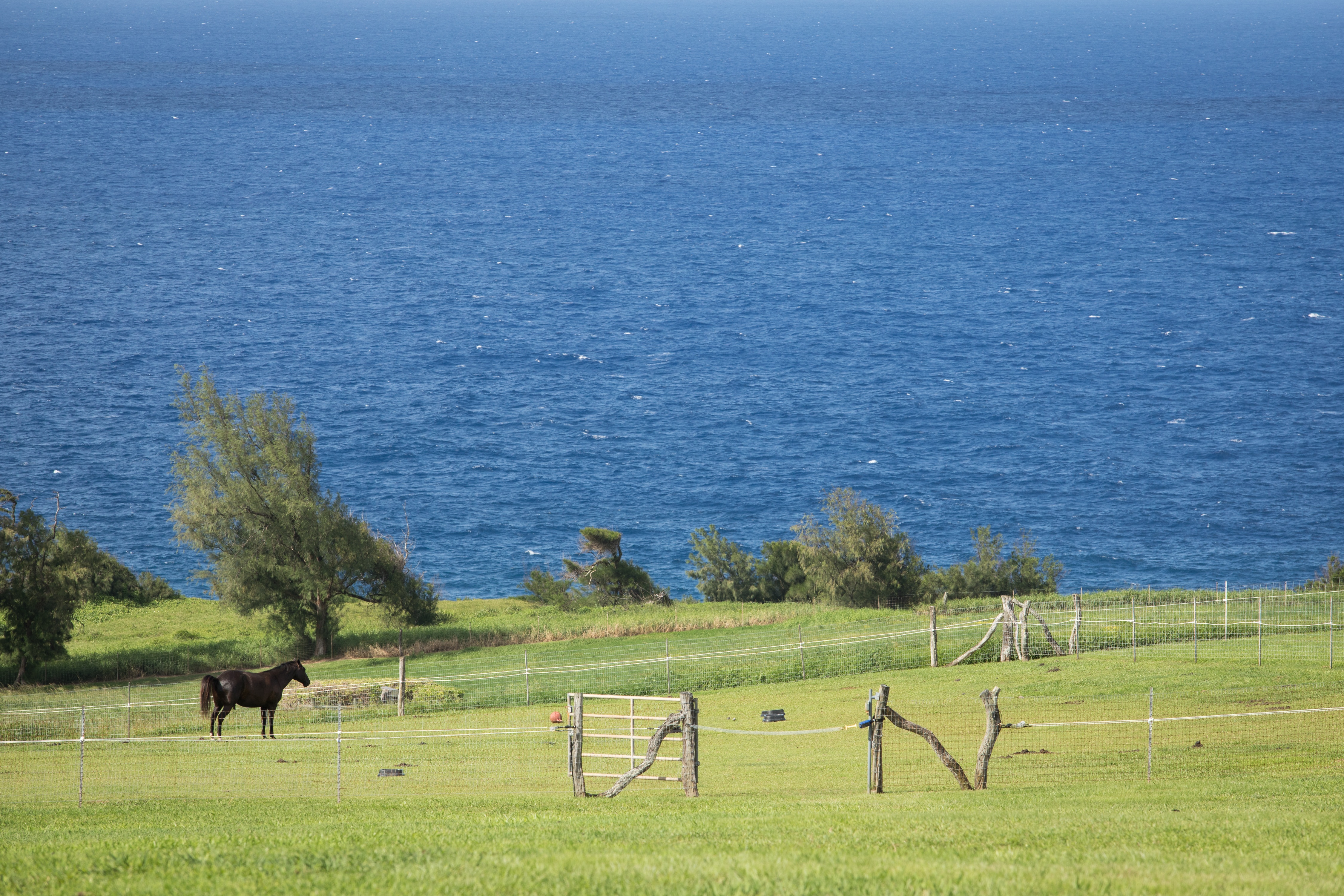Building, Development, Conservation: When Is Environmental Review Required in Hawaiʻi?
When Iʻm selling vacant land parcels in Hawaiʻi, buyers often have questions about whether they can…fill in the blank: build, subdivide, build multiple structures, run a business. My answer to the question may refer them back to research state land use designation and county zoning codes, coastal and shoreline management regulations, and in some cases the Hawaii state statutes HRS 343 regarding environmental impact statements and environmental assessments.
The definition of environmental effects covered under the law is broad and roughly encompasses what we refer to as “conservation values” in our Hawaii Life conservation and Legacy Lands initiative. The definition in the statute calls for review of effects on the economic, social and cultural practices of a community, as well as more narrowly defined “environmental” or ecological effects.

Map from Environmental Assessment published for a proposed 6-lot oceanfront subdivision on the Kohala Coast with features marked including archeological sites and drainageways into the ocean.
Environmental Assessment or Environmental Impact Statement?
The first step is to figure out whether what you propose to do with your property “triggers” HRS 343. Triggers include:
- Any use within state conservation district
- Any use within designated shoreline
- Any use within a historic district
Note how broad the statutory term “any use” is…many “uses” short of building are included: grading, removal of trees, building a dog kennel in conservation district…even a consolidation and resubdivision where the boundary change is only on paper might require permits and assessments.
The purpose of an environmental assessment is to determine whether an environmental impact statement is required.
When you apply for a building permit, grading permit, special use permit, if any of the “triggers” are present, the County planning office will let you know that they require a “finding of no significant impact” to proceed. If, however, the environmental assessment finds there may be significant impact(s), a more elaborate environmental impact statement will be required.

Building close to the oceanfront like this listing requires a Special Management Area permit (MLS 618452)
Public Notice Requirements for EA and EIS in Hawaii
The Stateʻs Office of Environmental Quality Control publishes a bulletin called The Environmental Notice twice a month. This is how OEQC satisfies the official requirement for public notice for draft and final environmental assessments, as well as for certain other actions such as special management area permits and shoreline certification applications, as well as habitat conservation plans.
In the public comment period following the publication of the draft, the applicant and appropriate agencies respond to comments, and sometimes changes will be requested prior to issuing of a final “finding of no significant impact” or approved EIS. And then a long list of other steps will be required prior to breaking ground or beginning the proposed project.
If you need more information on a particular property you are considering, remember this is just the overview. You may need to hire multiple professionals, including a planning consultant, archeologist, and civil engineer to work your way through the requirements.

Leave your opinion here. Please be nice. Your Email address will be kept private, this form is secure and we never spam you.